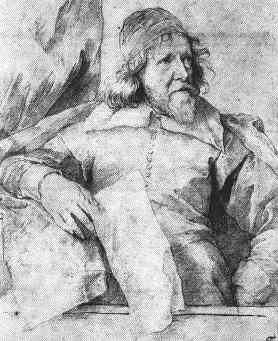Inigo Jones
The son of a London cloth-worker, Inigo Jones studied painting and architecture in Italy through the generosity of his patron, the Earl of Pembroke. He returned to London in 1605 as Queen Anne's architect*.
Jones was also in charge of the production of court masques, creating innovative stage and costume designs*. He collaborated frequently with Ben Jonson until their argument in 1631, after which Jonson was dismissed* from his post. Jones' connections at court proved unfortunate, however; as a royalist, he was persecuted after the civil war and died in poverty.
Footnotes
-
A Renaissance architect
Jones' most famous architectural designs include the Banqueting House in Whitehall Palace, the piazza of Covent Garden, and Queen Anne's house, Greenwich.
-
Continental influence
Jones' stage designs for court masques drew on Italian style and technique; he introduced for the first time in England the "picture-stage," framed by a proscenium arch and concealed by a curtain. He also developed a system of changing scenes with movable flats and shutters. By 1630-40 both innovations were being used in private theatres.
-
Jones satirized
Ben Jonson satirized Jones in A Tale of a Tub (1633)--but so great was Jones's influence at Court that the Office of the Revels censored the offending character, one Vitruvius Hoop, "exceptions being taken against it by Inigo Jones, Surveyor of the King's works." Nonetheless, Jonson managed to write in another character (In-and-In Medley) who represented Jones as a bumbling carpenter. (Vitruvius was a Roman writer on architecture and stage machinery.)
